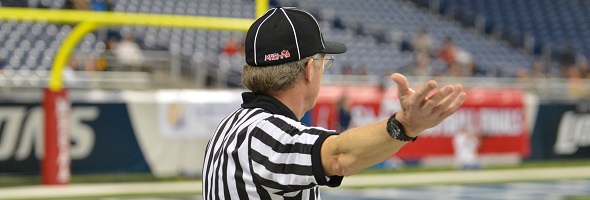
Be the Referee: Play Clock Experiment
September 1, 2016
This week, MHSAA assistant director Mark Uyl explains the 40-second game clock Michigan football schools are allowed to try this fall.
Be The Referee is a series of short messages designed to help educate people on the rules of different sports, to help them better understand the art of officiating, and to recruit officials.
Below is this week's segment – Play Clock Experiment - Listen
From time to time, the MHSAA receives permission from the national rules making body, the National Federation of State High School Associations, to experiment with a new rule.
This fall in high school football, Michigan schools can experiment with a 40-second play clock. In this experiment, the 40-second play clock begins at the end of the previous play, giving teams consistency from week to week when the offense can next snap the ball.
With using the traditional 25-second play clock, it really depends on the referee of the game in terms of the pace on how quickly the offenses can go.
Past editions
Aug. 25: Clipping in the Free Blocking Zone - Listen

Be the Referee: Toe the Line on PKs
October 15, 2020
This week, MHSAA officials coordinator Sam Davis explains a change in soccer affecting goalkeeper movement during penalty kicks.
Be The Referee is a series of short messages designed to help educate people on the rules of different sports, to help them better understand the art of officiating, and to recruit officials.
Below is this week's segment - Toe the Line on Penalty Kicks - Listen
Here’s a high school soccer rules change for the upcoming season. Rules for the placement and movement of the goalkeeper on a penalty kick have been rewritten to make it more clear what a keeper can or cannot do.
As in previous years, goalkeepers can move laterally along the goal line prior to the taking of the penalty kick. But new this year, goalkeepers need only have one foot on (or in-line) with the goal line at the time of the kick.
This allows keepers to lunge before the ball is kicked, as long as one foot stays on the line. Previously, the goalie needed to keep both feet on the goal line or in line.
Past editions
10/8: Disconcerting Acts - Listen
10/1: Ball Hits Soccer Referee - Listen
9/24: Clocking the Ball from the Shotgun - Listen

